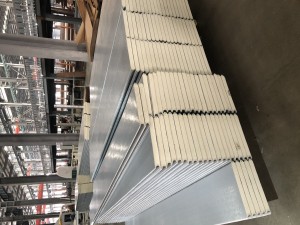how to lubricate sliding door
Sliding doors are not only functional elements in our homes, but they also provide a seamless transition between indoor and outdoor spaces. Over time, however, sliding doors often become stiff, noisy, or difficult to operate due to friction and wear. solution? Proper lubrication. In this blog post, we’ll guide you through the steps of how to lubricate your sliding door to ensure it glides easily along its tracks and continues to bring an element of beauty and convenience to your living space.
Step 1: Gather necessary tools and materials
Before starting the lubrication process, have the following tools and materials ready:
1. Silicone or dry door lubricant
2.Clean cloth or rag
3. Soft brush
4. Screwdriver (if necessary)
5. Vacuum cleaner or broom
Step 2: Prepare the sliding door area
First make sure the sliding door area is clean and free of any dust, dirt or debris. Use a vacuum cleaner or broom to remove loose particles from the tracks and surrounding surfaces. This step is crucial as it prevents any dirt from mixing with the lubricant and potentially causing more friction.
Step 3: Check the sliding door hardware and tracks
When inspecting your sliding door hardware, look for loose screws, damaged rollers, or bent tracks. Repair or replace any damaged parts before continuing the lubrication process. Remember, a well-maintained sliding door system will operate optimally with proper lubrication.
Step 4: Apply lubricant to the sliding door track
Using a silicone-based or dry door lubricant, apply a thin, even layer of lubricant along the entire length of the track. Be careful not to over-lubricate as excess lubricant will attract more dirt and possibly clog the sliding door.
If your sliding door has bottom tracks, be sure to lubricate them as well. Pay close attention to areas where the door tends to stick or is difficult to slide. For better coverage, you can use a soft-bristle brush to apply the lubricant to hard-to-reach areas.
Step 5: Lubricate Sliding Door Rollers and Hinges
Now it’s time to focus on the moving parts of your sliding door. Apply a small amount of lubricant to the door rollers located on the bottom edge of the door and the hinges located at the top and bottom of the door frame.
If your sliding doors have adjustable roller assemblies, take this opportunity to inspect and adjust them for optimal performance. If necessary, loosen the adjusting screw and use a screwdriver to make the necessary adjustments.
Step 6: Test the movement of the sliding door
After applying the lubricant, slide the door back and forth a few times to distribute the lubricant evenly along the tracks and rollers. This will help distribute the lubricant and ensure smoother sliding.
Keeping your sliding door running smoothly is crucial to the overall functionality and aesthetics of your home. By following these simple steps and taking the short time to lubricate your sliding door, you can ensure its long-term durability and ease of use. Performing this type of maintenance regularly will not only help avoid costly repairs, but will also extend the life of your sliding door. So go ahead and give your sliding door that magical lubrication so it glides effortlessly every time you pass through it.
